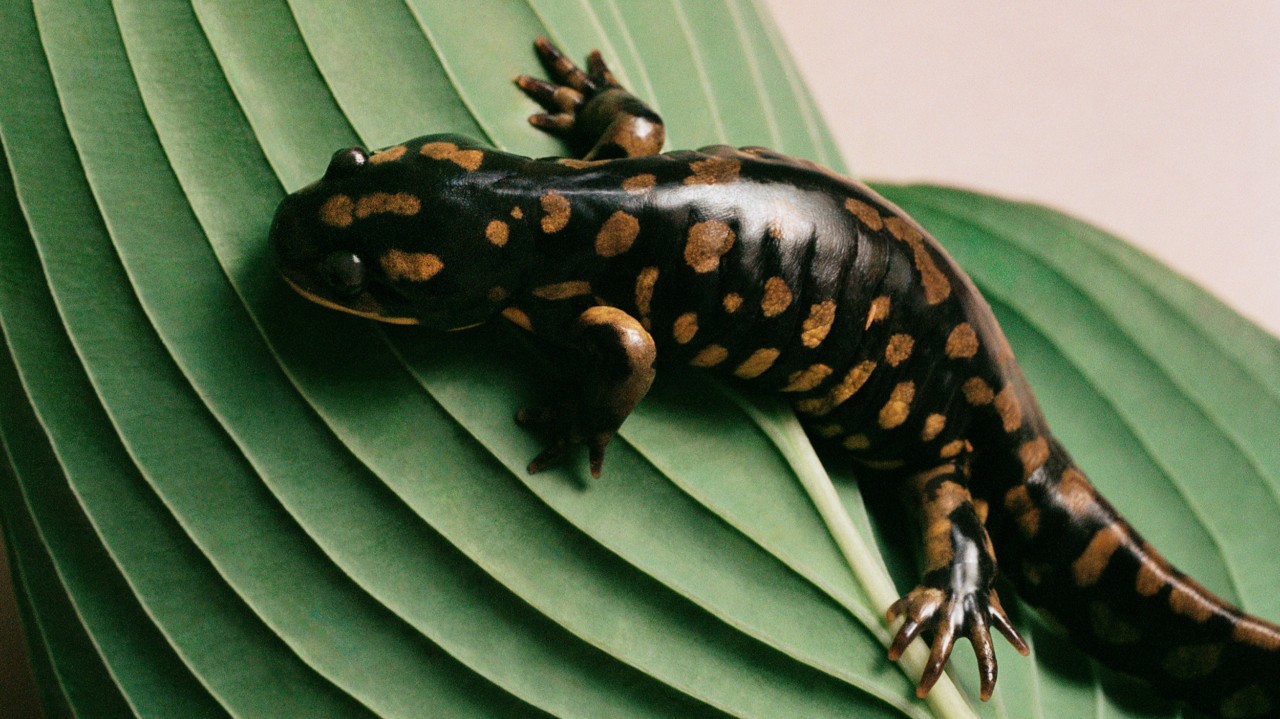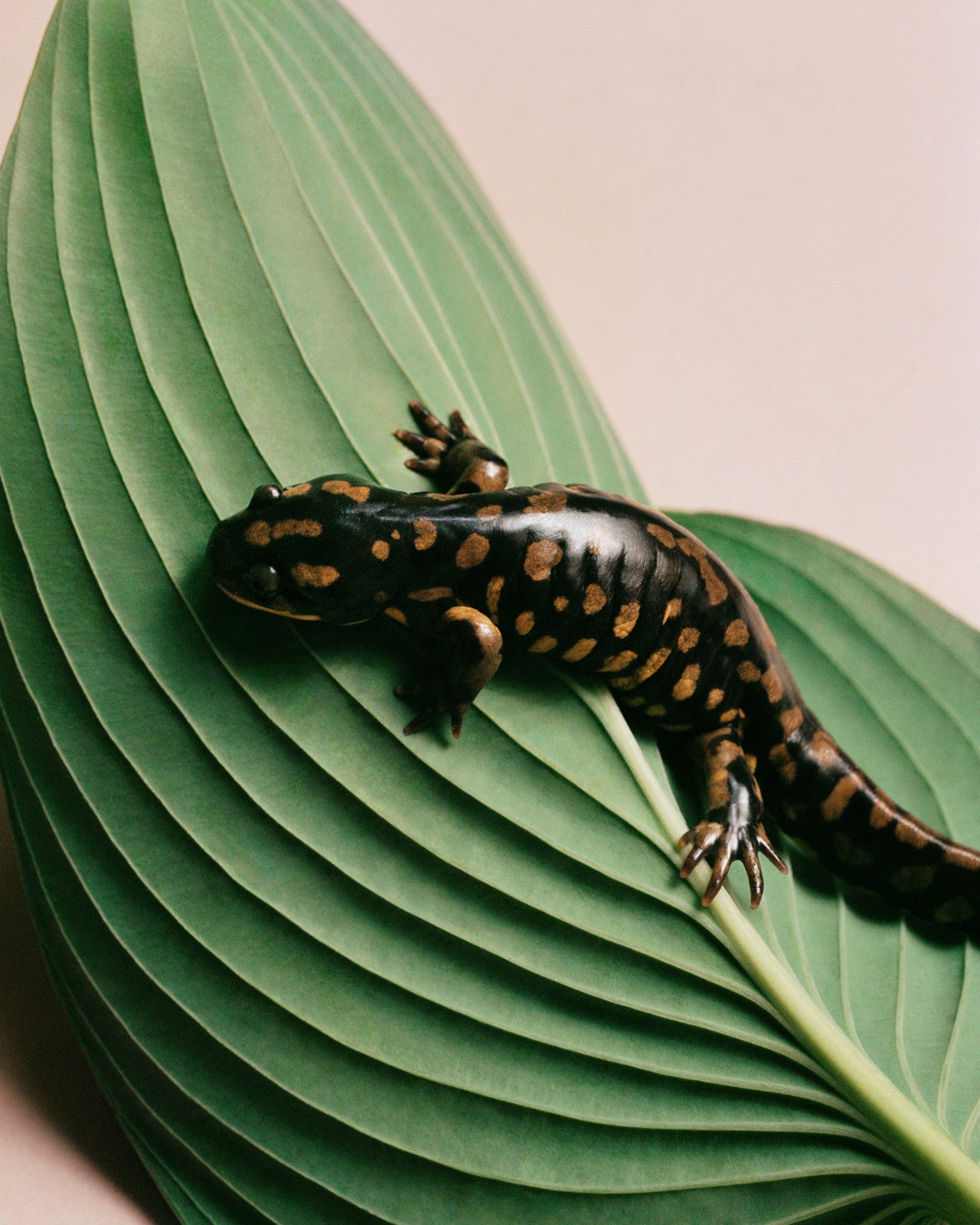

“Perhaps the next stage of evolution of the amphibious soul means moving fluidly between the world we were born into and the world we are creating.”
—Craig Foster, Amphibious Soul
In early October, I found myself sitting next to a pond nestled in the woods of upstate New York. I had woken up from a dream that morning in which an old woman had told me that there would be four more years of darkness—an omen that proved itself true—and I was feeling existential. But there in the grass before me, a heroic journey was unfolding: an eastern newt was slowly making its way to the water’s edge, stalk by stalk, toward another world waiting in the distance.
Newts are a kind of salamander, one of three orders of amphibians that propagate the planet. Derived from the Greek amphibios, their name means living a double life. This title is a nod to their defining characteristic: an ability to live in both terrestrial and aquatic environments. First appearing 340 million years ago, they were the first group to split from entirely aquatic creatures to those that could dwell on land, ushering in a new era for animals.
For most amphibians, their biphasic life cycles begin underwater as aquatic embryos. Once they emerge from their egg capsules, the larva begins to roam freely in the water, feeding and growing. After their development reaches a certain stage, hormones trigger a metamorphosis. For salamanders and caecilians, the change from larva into adult is subtle; whereas for anurans, the transition from tadpole to frog or toad is more dramatic. Transformation can take many shapes.
The characteristics among adults are varied as well. Anurans trade their tails for powerful rear limbs that allow them to leap greater distances. Caecilians are more snake- or worm-like, with no arms or limbs whatsoever. And salamanders are somewhere in between, with slender bodies and limbs. Still, most share a few common traits. In addition to the ability to move between worlds, species of all three orders most often have moist, permeable skin through which they breathe.
In addition to swimming and slithering between worlds, certain amphibians such as newts and axolotls are also able to slip through time. They possess a rare gift for healing, with limbs and even jaws containing natural mechanisms that allow them to reprogram certain cells to younger states of development. This means that after a limb is lost, they can effectively replace it entirely. They are also capable of regrowing certain organs including their eyes and hearts.
As author and documentary filmmaker Craig Foster points out in his new book Amphibious Soul, we are all tasked with living in two worlds: the one we now find ourselves a part of, and the one we are attempting to metamorphose it into. And while the distance between the two might seem overwhelmingly vast in this moment, that’s all the more reason to be the bridge—to not only fight the battles of the present, but to embody our regenerative visions of the future.
Having lived an amphibious life, I’m familiar with time spent between worlds. I can look back on my journey to the water’s edge, the blades of grass I gripped so fiercely, and see it: the years of liminality now receding into the horizon of a life that simply is. What comes after becoming? I know, I know: it isn’t over, it continues. It always does. But for now I’m floating in a pond, rain dampening my softened skin, wondering: what if this could be the shape of my resistance?
Between Worlds